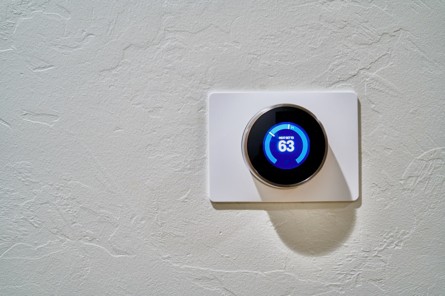Knowing how to test a home thermostat can help you monitor the effectiveness of your thermostat. As the homeowner, you can see why the home is cold at night and too hot during the day, despite having a running HVAC 24/7.
If you suspect your thermostat is ineffective, first check the settings. Ensure that the device is ON and that the wires are correctly connected. Another way to know your device is working is by checking the breaker. If it is off, turn it back on.
There are many reasons your thermostat is not functioning as it should, so this is not a significant cause of alarm. However, to know how to repair a faulty or failing thermostat, you first must know the signs it is not working.
This article will mention the thermostat failure symptoms to check for and how to test if the device is working correctly.
Signs Your Thermostat Is Not Working
A home thermostat helps homeowners regulate the home temperatures during hot and cold seasons. They set thermostats to warm or cool the home through the HVAC. These tiny gadgets get too old to function or spoil and stop running.
Some signs to tell that your thermostat is not working are;
1. No Change In Temperature Despite The Change Of Settings
When the home is too hot during the day or cold at night, you want to change the settings of your thermostat to warm or cool the house. You should immediately feel a temperature change when you set the thermostat.
For example, if the home is too hot and you send a command to the HVAC to shut off, it should do so immediately. However, it could be faulty if you notice a delay in responses after commanding the thermostat.
2. Different Temperatures In The Rooms
There are different HVAC types, from standard to special geothermal systems. Some homeowners buy multi-split conditioners that cool rooms individually. With the multi-split conditioner, you can set different temperatures in other rooms.
However, if you have the standard HVAC system, your rooms should be at the same temperature as the thermostat. Having some colder rooms than others is a sign of an ineffective thermostat.
Hire a professional to check the device to know if the problem is your thermostat. You can also research how to test the thermostat to tell if it is a problem. This is because other reasons can lead to temperature differences in the rooms.
3. The HVAC Cannot Turn On
Your thermostat acts as the central control of your HVAC. It could be a sign of machine failure if you cannot control the thermostat’s air conditioner or heat pump. However, it is not the end of your HVAC.
If an expert confirms that your thermostat is the problem, you can replace it. Thermostats are cheaper than the air conditioner.
4. The HVAC Does Not Stop
Since the thermostat is your HVAC’s central control system that turns the system on, it also switches it off. So if your rooms are cooler warm enough and the HVAC does not have more work to do, the thermostat will alert it to power off.
However, a faulty thermostat cannot send the on and off command. So if your HVAC stays on even after the rooms have warmed or cooled, check your thermostat. It could be faulty.
How to Test a Thermostat
Now that you can tell when your thermostat is not working correctly, knowing how to test it helps you be sure of its condition. We will guide you through a step-by-step process to know if your thermostat is working correctly.
1. Check If It Is ON
Most homeowners assume that their thermostats are always on, so they don’t bother to check. However, people mistakenly press buttons, and your thermostat switch could be turned OFF. If you find it off, turn it on and see if the thermostat works.
2. Check The Settings
Another reason your thermostat is not properly working could be poor settings. Also, failure to change from summer settings to winter could make the rooms unbearable to live in.
Homeowners should change their thermostat settings after the change of seasons. Set standard cooling or heating temperatures for your home to make it comfortable.
3. Is The Battery Working?
The reason your home thermostat is not working could be low battery. You might not see the notification if you programmed it to show when the battery is low. If it has been a long since you bought new batteries, you should replace them.
Get a screwdriver to open the battery space on the thermostat. You can read the user manual to know how to install the new batteries and ask the experts about the best batteries to install.
4. Check If The Wiring Is Correct
If there is a problem with your thermostat’s wiring, the device won’t work correctly. This is because the wires complete the circuit for a proper power flow. If you suspect your thermostat wires are broken, start by turning off the circuit breaker to avoid electrical accidents.
Remove the thermostat cover to check the wires. If there is no physical disconnection, you might not tell that the cables are broken by looking with naked eyes.
A multimeter makes it possible to check the continuity of the wire. When checking, connect the red wire of the multimeter to that of the thermostat. Then, do the same to the black wire of the multimeter and the thermostat. The readings should be zero or a number close to zero.
5. Tighten The Terminals
Ensure your thermostat’s terminals and screws are tight to ensure the machine’s correct functioning. Loose screws can make the internal parts of the thermostat lose and unable to complete the circuit.
6. Switch ON The Breaker
Another ignored part of the thermostat and HVAC is the breaker. Most homeowners assume that it is always on, which is not the case. Sometimes you could switch it off when repairing a part and accidentally leave it OFF.
Check if the thermostat is operating correctly after switching ON the breaker. However, note that these changes might not be instant, so you should be patient.
Final Words
Knowing how to test a home thermostat helps solve many problems. First, it reduces the cost of hiring a thermostat expert for inspection and ensures the HVAC works correctly. If you don’t know how to test the thermostat, hire a professional.






